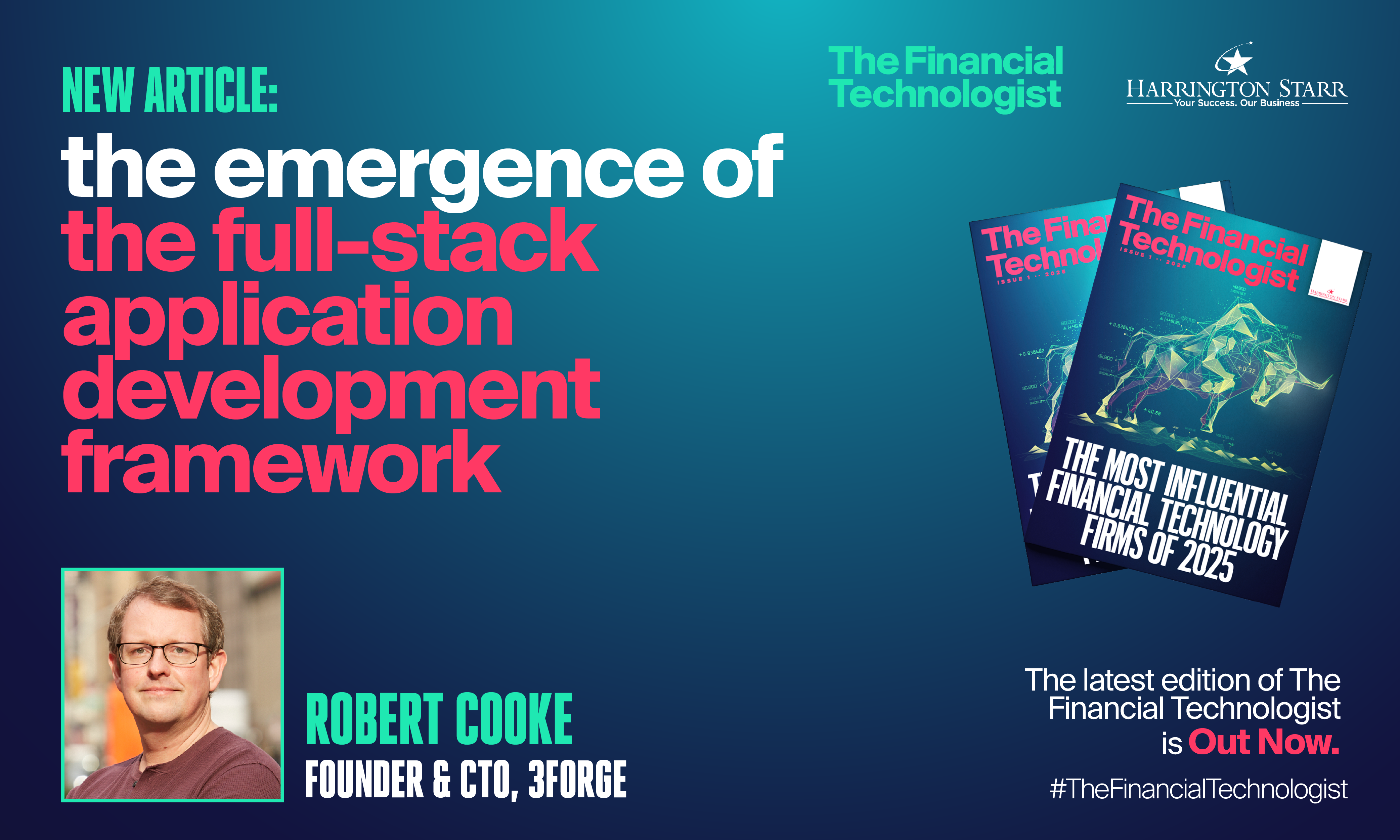Download your free copy of the latest Financial Technologist magazine here.
In today’s rapidly evolving technological landscape, the role of the full-stack developer has become a cornerstone of modern enterprise architecture. A full-stack developer is adept at handling both front-end and back-end development tasks, bridging the gap between user interface design and the underlying logic, data management, and server-side integration. This dual capability matters immensely because it fosters agility, reduces cross-team friction, and supports the creation of scalable, secure, and responsive applications.
The Full-Stack Developer: Bridging Two Worlds
Full-stack developers command expertise across multiple layers—from the presentation layer (using technologies such as HTML, CSS, and JavaScript frameworks) to the application logic and database layers (involving server-side languages, data storage, and APIs). This comprehensive skill set enables them to understand how decisions on one side of the stack affect the other. As a result, companies benefit from architectures that are more cohesive and better aligned with business objectives, particularly in environments where speed, reliability, and security are non-negotiable.
Challenges Without a Unified Platform
Despite the clear advantages, full-stack developers have long faced a critical challenge: the absence of a unified platform that can seamlessly integrate both front-end and back-end work. Traditionally, developers have been forced to work across disparate systems—each with its own conventions, documentation, and compatibility issues. This fragmentation not only increases development time but also introduces inefficiencies and potential security vulnerabilities.
Without a standardised platform, integrating different components—from user interface libraries to data processing engines—becomes a laborious process. The lack of cohesion leads to prolonged development cycles and makes it difficult to scale applications, particularly those that must support high volumes of transactions or real-time data processing.
The Rise of a New Terminology
The term “full-stack development framework” first emerged around 2018, though it remained relatively obscure and confidential for several years. It wasn’t until 2022 that the concept began to gain traction and rank more prominently in industry discussions. The guarded nature of early full-stack frameworks can be attributed to the monumental challenges involved in building them. Creating a platform that can integrate front-end and back-end technologies is not just a coding challenge—it requires deep insights into distributed systems, network protocols, data consistency, and security paradigms. Integrating diverse development paradigms into a single cohesive platform is akin to solving a multifaceted puzzle where every piece is constantly evolving. This complexity has meant that such frameworks were closely held until thoroughly tested in high-demand environments.
Trailblazing Adoption in Demanding Environments
Today, the full-stack development framework is no longer just a theoretical ideal—it is being adopted in some of the most challenging and complex environments, notably in financial markets. Industries such as quantitative trading, risk management, and compliance require systems capable of processing massive volumes of data in real time while ensuring uncompromising security and reliability.
For instance, 3forge has been at the forefront of adopting a unified full-stack approach. By leveraging an integrated platform, 3forge has streamlined operations that span data ingestion, real-time analytics, and historical data aggregation. Although financial markets provide a rigorous testing ground, the framework itself is not tailored exclusively for finance. Its design principles are universally applicable, making it an effective solution for any environment that demands scalability, low latency, and comprehensive data integration.
Addressing Technological Challenges
The full-stack development framework offers tangible solutions to several key technological challenges:
- Scaling High Volumes: Modern enterprises must manage vast amounts of high-velocity data. An integrated framework comes with built-in mechanisms for scaling resources efficiently, ensuring that applications remain responsive under peak loads.
- Aggregating Composite Data: Today’s applications often rely on both historical records and real-time data streams. A unified framework simplifies the integration of these diverse data sources, reducing the friction inherent in reconciling data from disparate systems.
- Reducing Integration Overhead: When developers operate within a single cohesive environment, the overhead of integrating multiple, standalone technologies is significantly minimised, leading to faster development cycles and more reliable software deployments.
A New Era for Enterprise Architectures and Generative AI
Beyond current applications, the full-stack framework is poised to play a pivotal role in addressing future challenges, particularly those brought on by the integration of generative AI technologies within enterprise architectures. As organisations adopt AI to automate decision-making, enhance customer experiences, and optimise operations, the need for robust, scalable, and integrated platforms becomes even more critical.
Generative AI systems require rapid processing of diverse data types and real-time adjustments to models. The full-stack framework, with its ability to seamlessly merge historical insights with current performance metrics, is well-suited to support these demands. This positions the framework as a key enabler not only for current digital transformation efforts but also for the next wave of enterprise innovation.
Looking Ahead to 2025
One strong prediction for 2025 is that it will be the year of the full-stack development framework. As these frameworks mature, they promise to drive a new paradigm in enterprise software development—one where the traditional boundaries between front-end and back-end engineering blur in favour of a more integrated, efficient approach. This evolution will enable companies to meet the demands of modern applications while proactively addressing emerging challenges, such as the integration of generative AI and the scaling of data-intensive operations.
In conclusion, the evolution of the full-stack development framework—from its initial, confidential emergence around 2018 to its broader adoption in 2022 and beyond—illustrates the dynamic nature of technological innovation. For technology and enterprise leaders, understanding and embracing this unified approach is not just a matter of streamlining development processes; it represents a strategic leap towards building the resilient, scalable, and intelligent systems of the future.
By Robert Cooke, Founder and CTO at 3forge
Download your free copy of the latest Financial Technologist magazine here.







